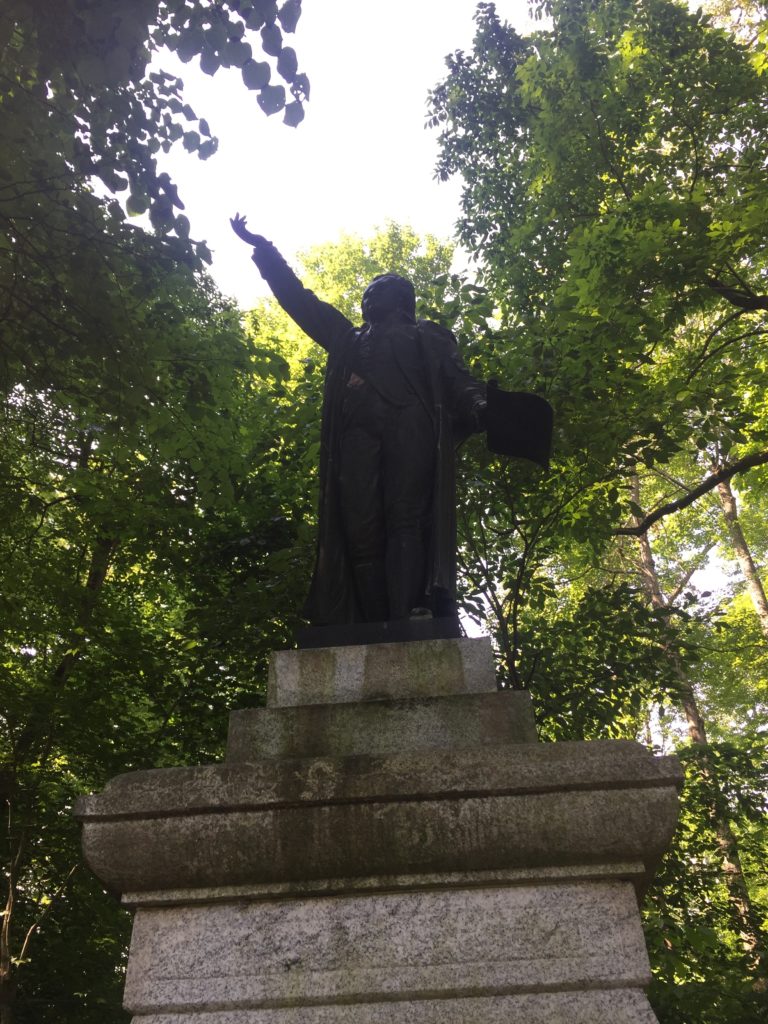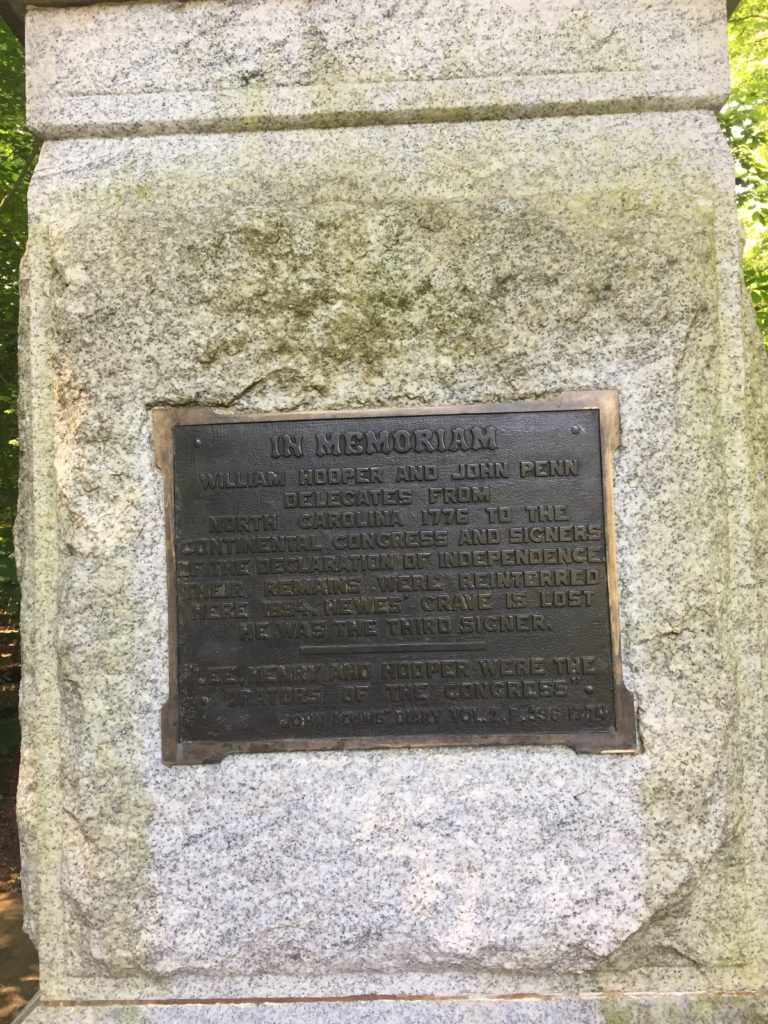Erik Visits an American Grave, Part 610
This is the grave of William Hooper and John Penn.


William Hooper was born in 1742 in Boston. The son of a Scottish minister, he was expected to enter the ministry and thus went to Harvard in 1757. He graduated in 1760, but had no interest in the ministry and chose to go into law instead. He studied with the legendary late colonial lawyer James Otis in Boston. He worked under Otis until 1764. But there were so many lawyers in Boston and so few in other parts of the colonies. So Hooper decided to try his hand in North Carolina. He moved to Wilmington and opened a practice there. He made a ton of connections with the elite of the region, which were mostly slaveholding rural landowners. He married into that elite and like many of them, was initially opposed to the rise of resistance to the British crown. In 1768, he was Deputy Attorney General for the colony during the War of the Regulation and he was absolutely opposed to the Regulators. There are stories that the Regulators dragged Hooper through the streets during a riot in 1770, but I don’t really know if this is true. In any case, he gained a reputation for being a conservative. What is known is that he urged strong force to suppress the rebels.
But over time, Hooper’s views changed. He was absolutely not trusted at first when he became to express his support for action against the crown. He was elected to the North Carolina General Assembly in 1773. There, he stood up against new laws to regulate the provincial courts, home of actions resisting centralized authority. This helped gain trust with the Patriots in the state. In 1774, the governor of North Carolina dissolved the assembly and Hooper led the fight to create a new one. That year, he was elected to the First Continental Congress and then the next year to the Second Continental Congress.
John Penn was born near Port Royal, Virginia in 1741. His family was well off, but he only had a couple of years of formal schooling, as his father thought education was a waste of time. While this attitude was fading in the southern elite, it certainly represented an earlier phase of colonialism, when all money went back into the plantations. But he was not without connections, as his uncle was Edmund Pendleton, one of the Virginia elite. He passed the bar in Virginia when he was 22 and moved to Granville County, North Carolina to start his law practice. A supporter of the Patriot cause, he was elected the Second Continental Congress as well.
Both Hooper and Penn became North Carolina signatories to the Declaration of Independence. Hooper actually was not in Philadelphia during the debate over the Declaration, as he was traveling, but he got to Philadelphia to sign it in August 1776.
Hooper resigned from Congress later that year because he was in a sketchy financial situation and needed to practice law to feed his family. Penn however was active in Congress. He served until 1777 and then was elected to another term in 1779 and stayed another year. But neither Hooper nor Penn had good health. Penn was offered a judgeship in North Carolina in 1780 but turned it down because his health was already declining, though he did continue to practice law. He died in 1788, at the age of 48. Hooper struggled because the British burned his estates toward the end of the war, as they fought largely in the Carolinas, attracting slaves off the plantation of the hypocritical slaving Americans. He also contracted malaria around this time. His health was dodgy too, though he did recover from the malaria. Hooper became a big-time Federalist during the Washington administration in a Jeffersonian state and thus fell from political favor. Seen as a friend of Tories, he became very unpopular toward the end of his life, which was in 1790, at the age of 48. His last major political act was supporting the ratification of the Constitution.
Both Hooper and Penn are largely unknown figures today and are reminders that many of the men who signed the Declaration of Independence are largely forgotten, despite the Jefferson-Adams-Franklin trio and a few others.
William Hooper and John Penn are buried at Guilford Courthouse National Military Park, outside of Greensboro, North Carolina. Of course, neither was originally buried there. They were moved by the state to celebrate them as heroes of the Revolution in 1894.
If you would like this series to cover other people who signed the Declaration of Independence, you can donate to cover the required expenses when I return from Havana and can link to PayPal. Thomas Heyward Jr is in Jasper County, South Carolina and William Paca is in Queen’s Anne County, Maryland. Previous posts are archived here.


